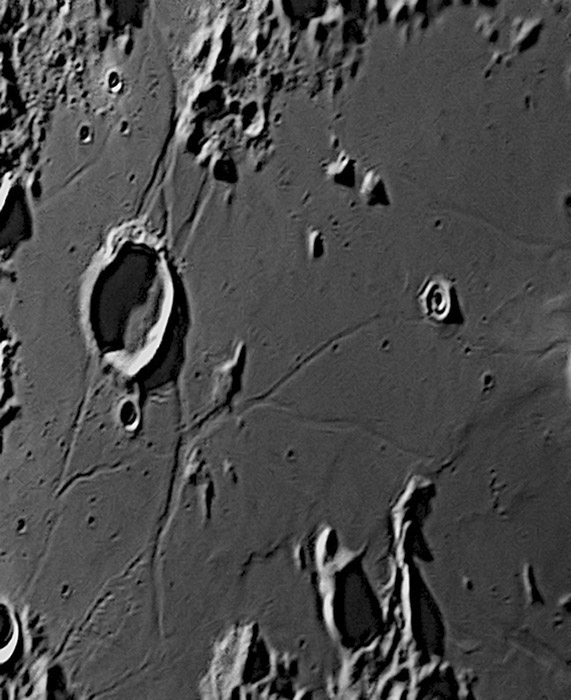August 25, 2023
How He Does It
Originally published August 10, 2013

image by Aerts Leo, Belgium
Note from CAW: Leo has sent so many excellent images like this one of Ramsden that I asked him how he obtains them. His method seems similar to others except for his daily check of collimation and the use of a dispersion corrector, which I had never heard of. Here is Leo:
High resolution Moon photography is done with two telescopes: a Celestron 14" and a high quality 10"f/15 ‘planetary’ Schmidt-Cassegrain with 25% obstruction. Before starting a webcam session, collimation is always checked. It has to be perfect. Depending on seeing conditions, different barlows are used, ranging between 1,8x and 4x. A dispersion corrector is a great help to obtain the smallest lunar features, especially when the Moon is close to the horizon. Also helpful are red, infrared and green filters to eliminate the influence of bad seeing conditions. Monitoring careful the sky is a must in our country (Belgium, latitude 51°N). I can use about 1 night in 5 for moon photograpy: 10% of those nights will give high resolution images. Capturing the Moon is done with CCD-camera’s of Imaging Source: a DMK31AU03 (1024x768 pixels) and a DMK 21AU618 (640x480 pixels). Imaging is done at 60 fps or 30 fps. Webcamfilms consist mostly of 4000-6000 images of which 800-900 are stacked. They are loaded in AutoStakkert 2 for analyzing and stacking purposes. The results are sharpened in Astra Image. When pleased with the results, additional corrections are done in Photo Shop 6. The final touch, denoising if necessary, is done with the free software Neat Image.
Aerts Leo
Technical Details
August 1st 2013 at 3h38 UT. Celestron 14 with 1.8x barlow, dispersion corrector and redfilter.
Related Links
21st Century Atlas chart 23.
Yesterday's LPOD: Baking the Moon
Tomorrow's LPOD: Hiding in Plain View
COMMENTS?
Register, Log in, and join in the comments.



